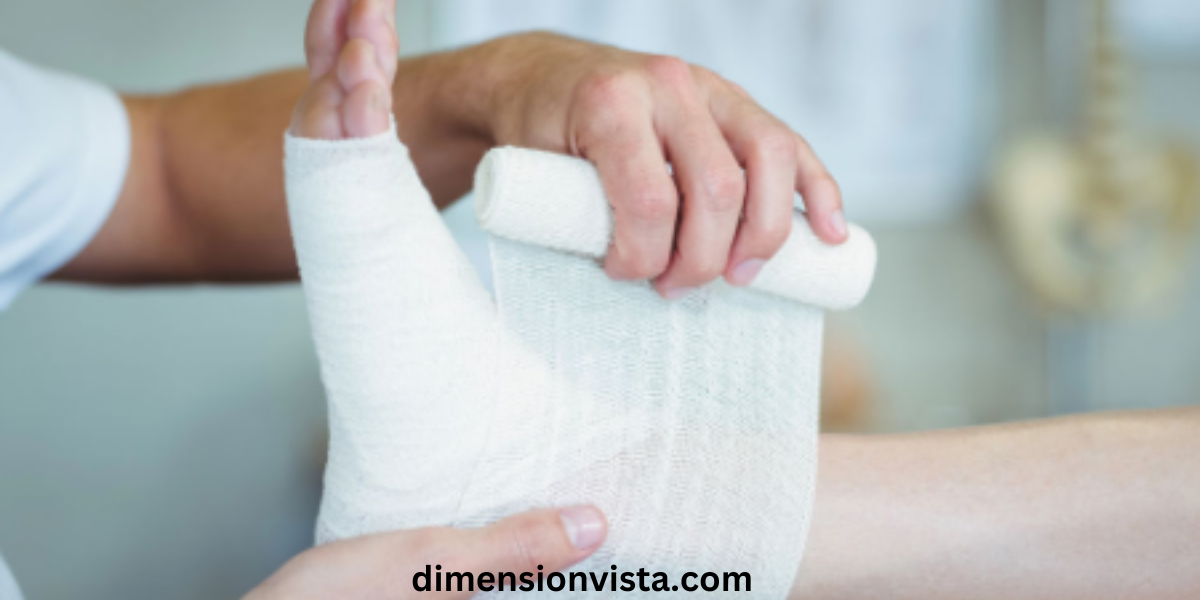Choosing the right wound dressing is essential for promoting faster healing, preventing infections, and ensuring patient comfort. With numerous dressing options available, it can be over whelming to determine the best choice. This comprehensive guide will walk you through the key factors to consider when selecting Wound Care Mastery, types of dressings, and best practices for wound care.
Understanding Wound Healing

Before selecting a dressing, it’s important to understand the wound healing process. Wound healing occurs in four stages:
- Hemostasis – Blood clotting begins immediately to prevent excessive bleeding.
- Inflammation – White blood cells fight infection and clear debris.
- Proliferation – New tissue and blood vessels form.
- Maturation (Remodeling) – The wound strengthens as collagen is deposited.
A suitable dressing should support these phases while keeping the wound environment moist and free from contaminants.
Factors to Consider When Choosing a Wound Dressing
To select the ideal dressing, consider the following factors:
- Wound Type & Depth: Is the wound acute or chronic? Shallow or deep?
- Exudate Levels: Does the wound produce minimal, moderate, or heavy exudate?
- Infection Risk: Is there a high chance of bacterial contamination?
- Patient Comfort & Sensitivity: Does the patient have allergies or skin sensitivities?
- Ease of Application & Removal: Will the dressing change be painful or difficult?
Types of Wound Dressings and Their Uses
1. Hydrocolloid Dressings
- Best for: Light to moderate exudating wounds, pressure ulcers, burns.
- Benefits: Provides a moist environment, reduces pain, promotes autolytic debridement.
- Examples: Duoderm, Comfeel.
2. Foam Dressings
- Best for: Moderate to heavy exudating wounds, surgical wounds, diabetic ulcers.
- Benefits: Absorbs excess fluid, provides cushioning, prevents bacterial contamination.
- Examples: Mepilex, Allevyn.
3. Alginate Dressings
- Best for: Heavily exudating wounds, infected wounds, cavity wounds.
- Benefits: High absorbency, promotes healing, conforms to wound shape.
- Examples: Kaltostat, Algicell.
4. Hydrogel Dressings
- Best for: Dry or necrotic wounds, burns, radiation wounds.
- Benefits: Provides moisture, soothes pain, promotes autolytic debridement.
- Examples: Intrasite Gel, Aquaflo.
5. Transparent Film Dressings
- Best for: Superficial wounds, IV sites, partial-thickness wounds.
- Benefits: Allows oxygen exchange, prevents contamination, easy monitoring.
- Examples: Tegaderm, Opsite.
6. Antimicrobial Dressings
- Best for: Infected wounds or wounds at risk of infection.
- Benefits: Kills bacteria, reduces odor, promotes healing.
- Examples: Silver dressings (Acticoat), iodine-based dressings (Iodosorb).
7. Composite Dressings
Best for: Various wound types requiring multiple benefits.
Benefits: Combines multiple dressing functions, easy to use.
Examples: Covermad, Medipore.
Wound Dressing Selection Guide
| Wound Type | Recommended Dressing |
|---|---|
| Dry Wound | Hydrogel, Transparent Film |
| Light Exudate | Hydrocolloid, Foam |
| Moderate Exudate | Foam, Alginate |
| Heavy Exudate | Alginate, Composite |
| Infected Wound | Antimicrobial, Alginate |
| Deep Wound | Alginate, Foam |
| Burns | Hydrogel, Antimicrobial |
Best Practices for Wound Dressing Application
- Clean the wound: Use sterile saline or an appropriate wound cleanser.
- Choose the right dressing: Select based on the wound type and healing phase.
- Ensure proper dressing size: The dressing should cover the wound with a margin.
- Monitor for signs of infection: Redness, swelling, odor, or increased pain.
- Change dressings appropriately: Follow medical guidelines to prevent complications.
Common Mistakes to Avoid
- Using the wrong dressing: Can slow healing or increase infection risk.
- Not changing dressings as needed: Can cause wound deterioration.
- Ignoring signs of infection: Early intervention is crucial.
- Applying dressings too tightly: Can restrict blood flow.
Conclusion
Selecting the right wound dressing is a crucial step in ensuring optimal healing. By understanding wound types, exudate levels, and dressing functions, you can make informed choices that promote faster recovery. Always consult a healthcare professional for proper wound care management.

